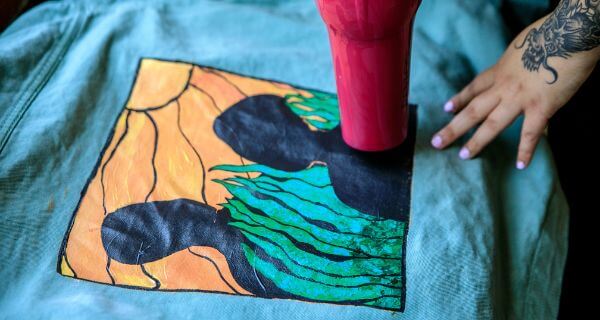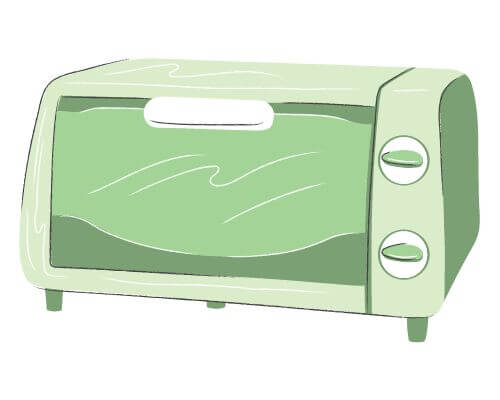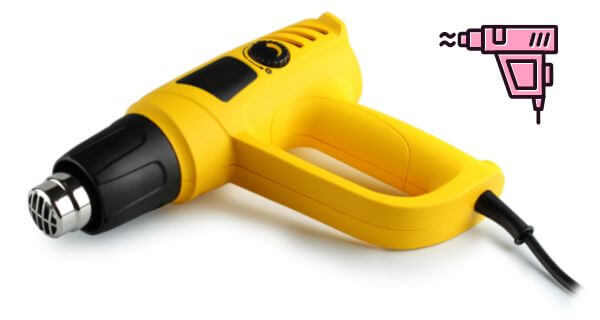Curing means drying the ink that you used for screen printing. Water-based inks or plastisol inks are the most used inks for screen printing.
After finishing every step of printing, you have to cure the print for ensuring a long life of the shirt you printed. Curing can be done by applying a heat press, heat gun, flash dryer, textile dryer, household iron, and sometimes an oven. Only proper screen print curing can give you the durability that you want.
Plastisol inks need approximately 315-325 degrees Fahrenheit to dry properly. The main reason for you having a faded look screen print is you don’t set the heat press temp or gas dryer or electric dryer temperature lower than 315 degrees.
If the curing temperature is not what is needed, your printed design for the fabric will start fading after the first wash or a few washes.
So, it’s very important that you cure your garment properly before marking it as done.
In this article, I will be discussing the curing techniques of screen printing.
Screen printing and curing the ink on cloth
If you cured the water-based ink or plastisol ink that you used for screenprint t-shirts it will surely ensure a long-lasting print on your shirt. Then after handling it in the proper way.
Screen printing is mainly used in cotton or cotton-blend fabrics. But you can print a 100% polyester fabric by screen printing.
But it can’t be done by regular textile ink or adhesive. To print polyester products you will need a special kind of adhesive and ink.
Ink used in screen printing
The ink that is used for printing has a great impact on curing as you are actually drying the ink that you used for screen print.
There are many kinds of ink for screen printing. However, you can classify them into two major types.

1. Plastisol ink
Plastisol ink is the most used screen printing ink. You can cure plastisol ink with heat press easily.
Plastisol ink is basically liquid plastic material. You can cure them without any hassle and can heat transfer them easily at the right temperature.
It is not impossible that you have a faulty print the first time.No worries if you used plastisol ink as you can cover up your mistake by giving it another pass through the printing process.
2. Water-based ink
It is the new sensation for screen-printed garments as it is eco-friendly. Water-based inks provide a thin layer of soft and flexible ink on the printed shirt.
Water based ink printing is not as easy as plastisol printing. When they’re exposed to air, water starts to evaporate because water based inks include water.
If you need to take a break, obliterate the design area before leaving.
Acrylic medium paints also can be used for screen printing. But the mixing ratio should be 1:1. It will help the ink pigments to dry slowly. So you will have an even and easy print.
Uv Ink and speedball inks also can be used for screen printing. Uv ink should be cured by UV light or under the sun.
Screen printing ink cured or under-cured?
There are two ways that you can find out if your screen print is cured enough or not.
- Stretch test
- Wash test
Stretch test
After curing is done stretch the area of your design. Don’t pull it too hard. A gentle stretch is enough.
Now look for cracks in your design. If you found one it means your garment needs to go curing again.
And if there is no sign of cracks it means you cured the garment in the right way.
Wash test
Wash test is the most effective and granted test for checking if the ink is cured or not.
An under-cured design will fade after its very first wash. so after your curing is done wash your garment.
If the design is faded a bit maybe it is okay. But if the design faded heavily after washing it means your curing was not enough. Either you applied less heat or less time.
You have to go several times to ensure the best quality cure. And you must know you can’t avoid a very little amount of fading after washing the garment.
How to heat cure screen prints with 7 different tools
There are many tools that can be used for curing your screen print ink.
Curing by using household available tools
There are few machines that are commonly available at everybody’s residence. You can use some of them for curing your screen printing. Let’s see.
1. Curing ink screen printing with a regular Hairdryer
You can use a hairdryer for curing screen printing. Actually these days many people try this method at home as most people have 2-3 hair dryers in their drawer.

It is a very safe and easy way to dry your printing inks. Though it is not a very good way of curing.
A hair dryer normally produces 110-130 degrees Fahrenheit. Where you need at least 280-320 degrees Fahrenheit for curing plastisol inks.
The temperature produced by a hairdryer is not actually enough for curing screen printing inks, specifically plastisol inks.
Curing them for a long period is a solution but there is a problem. The air can force your ink to dwell all over your garment.
You can use it one or two times for curing but it’s better not to use one.
2. Using a household Iron
Household iron is a pretty effective tool for curing your print. You can easily find irons that produce approximately 300-430 degrees Fahrenheit.

This much heat is enough for curing your ink properly.
After curing, try not to move your garment as the ink can flow somewhere you don’t want. But if it’s necessary to move your shirt before curing you should do it in a very careful way.
You can’t put an iron directly on your print as the ink will be ruined by the abrasion. Wait at least 15-16 hours before putting the iron on it after printing.
If you touch the printed design and the ink is not coming off with your hand now is the time your heat it with your iron.
Set the temperature around 350-370 degrees Fahrenheit on your iron. Then place a piece of brown paper over your design.
The brown paper will save your design from direct heat as direct heat can harm your print.
And now iron over the paper that you put onto your design. Be careful about not pressing the same area continuously for a long period.
Press water-based inks for 3-4 minutes. check if the ink is dried properly. If not another 5 minutes will do it for you.
Iron is a handy tool for DIYers for curing screen printing. But for business, it’s not that efficient as it is comparatively slow.
3. Cure paint ink using Oven
An oven is a machine that most people have in their homes. But why on earth am I talking about an oven!

Because you can cure your screen print with your oven. Yes, you really can. it sounds pretty weird though but oven curing actually works.
You need to set the temperature at 350-450 degrees Fahrenheit in the oven. The temperature totally depends on the fabric you are printing.
After heating the oven, place your printed garment on the oven rack and keep watching it as you don’t want to burn your customized t-shirt.
It is possible that your t-shirt is burned if the heat is high.100% polyester fabric starts melting approximately at 480-500 degrees Fahrenheit.
Try not to use an oven for curing prints as cooking in that oven can be health-damaging. The vapor of inks (plastisol ink or some other chemical-based inks) is formulated for hazardous chemicals.
Curing screen printing ink by using specialized tools
4. Curing screen printing with Heat gun
Heat gun is a specialized machine that is used for various purposes. But these days many use it as a dryer for their print on garments. You can easily cure water based ink with heat gun without any problem.

A heat gun can produce heat at approximately 900-1000 degrees Fahrenheit. So you can dry your print with a heat gun.
It is not that costly. Many people start their customizing t-shirt business with a heat gun. But popularity doesn’t determine efficiency.
If the design area is big, maintaining even heat all over the design is tough. Some parts will be cured soon and some will take time.
It takes 5-7 minutes for curing the print ink properly with a heat gun. However, it can vary on a design basis. More heat and time can damage the fabric of your garment.
Heat gun is good enough for starters. But it is better to have a heat press machine or flash dryer as quickly as possible.
5. Curing ink with Heat press
You can use a heat press to cure your screen printing as well. Heat is a machine that’s an expert in heat transfer. It can produce a temperature of almost 980-1000 degrees Fahrenheit.

Give your print some time after transferring it onto the garment. place a Teflon sheet over your design while curing. Apply a temperature of around 300 degrees Fahrenheit.
Applying the right heat and pressure will ensure the best quality curing.
Screenprint curing with a heat press takes around 2-3 minutes. It can take up to 5minutes if the machine is not heated previously.
It is not that costly. Running a business with a heat press can benefit you in many ways. But it is best for vinyl designs.
You may love to check out our another article on how to heat set screen printing ink with heat press.
6. Curing printing with Flash dryer
It is the best machine at an effective cost for curing screen-printed inks. If you are running a business that is growing buy one as soon as possible.
After printing is done place the flash dryer over the design. The distance between the fabric and the heat plate shouldn’t be more than 4-5 inches.

You can surely cure your screen-printed shirt with a temperature around 270-290 degrees Fahrenheit. Set the heat of your flash dryer around that.
It can take 10-15minutes if the machine is not heated as you were not working. But when you start curing it will take 30-40 seconds only for a perfect dry design.
Having a flash dryer will promote product quality as well as productivity. It is comparatively costly but buying one for your screen-printed customizing shirt business is a smart decision.
7. Using Conveyor dryer
It generally features a motor-driven conveyor system and a heating chamber, exhaust components, and a control system.

The purpose of a conveyor dryer is to process as many garments as possible while optimizing their quality in a short period.
The conveyor dryer is very costly and it takes a lot of space. It is mostly used in industries for curing screen print inks as it can cure a huge number of garments at a time.
If you’re running a small business you don’t need a conveyor dryer.
Note: You can cure your screen print in different ways. Always test if it is perfectly cured before washing it. If the ink is not cured properly, cure it again.
Conclusion
Printing ink cure is another type of removal operation which rely on chemical, additional heat, and pressure creating process. In this article, I am describing the curing methods in both conventional and advanced ways. In some cases, curing methods looks expensive but for bulk production and industrial basis, curing screen prints contribute a lot.
You can also get benefited from curing screen print in a single piece of fabric at home and customized solution with the discussing methods and steps.

Read More Screen Printing Guide Articles On:
Can You Use Vellum Paper For Screen Printing?
Heat Transfer vs. Screen Printing & What The Difference?
Screen Printing Costing Explained



